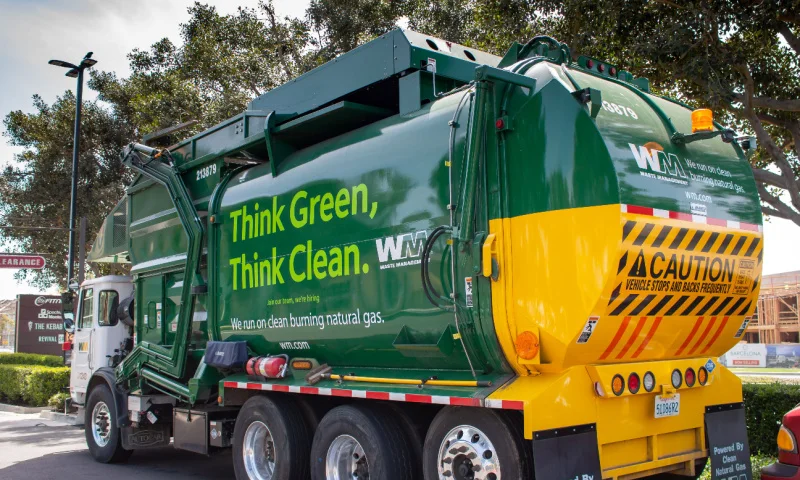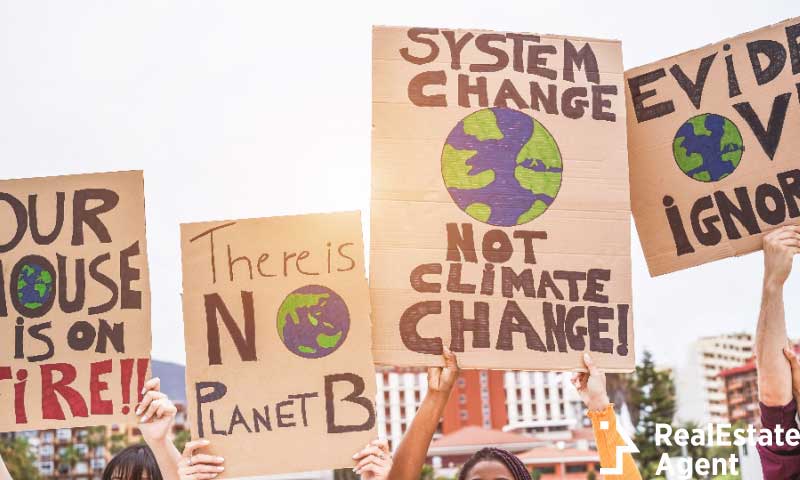As the world becomes more aware of the negative impact of fossil fuels on the environment, more and more homeowners are turning to clean energy technology to power their homes. Clean energy home improvements are good for the environment; there’s no arguing with that. They can also save homeowners money in the long run.
Clean energy technology encompasses many options. It includes solar panels, wind turbines, geothermal systems, and energy-efficient appliances. Homeowners can reduce their reliance on traditional energy sources and their carbon footprint by harnessing the power of the sun, wind, and earth.
Clean energy home improvements benefit the environment. They can also increase a home’s value and appeal to potential buyers. As more homeowners adopt clean energy technology, it is becoming easier and more affordable to make the switch. Whether you’re looking to reduce your carbon footprint, save money on your utility bills, or increase your home’s value, clean energy home improvements are an excellent choice.
Clean energy vs. renewable energy
Clean energy and renewable energy are two buzzwords that have gained significant attention recently. While the terms are often used interchangeably, the two have some critical differences.
Clean energy is any energy source that produces little to no greenhouse gas emissions or other pollutants that contribute to air and water pollution. It includes renewable energy sources like solar, wind, and geothermal energy. Also, nuclear energy and some forms of natural gas that have been processed to remove carbon emissions.
Renewable energy, on the other hand, refers specifically to energy sources that can be replenished naturally over time. It includes solar, wind, hydropower, geothermal energy, biomass, and biofuels from plants or waste materials. Renewable energy sources are considered clean because they emit little to no greenhouse gases. But not all clean energy sources are renewable.
The distinction between clean energy and renewable energy is essential. It is because some sources of energy, like nuclear power and some forms of natural gas, may not be renewable but are still considered clean.
Additionally, renewable sources, like biomass and biofuels, are only sometimes clean. It depends on how they are produced and used.
Benefits of clean energy
Clean energy technology is transforming the way we power our homes and businesses. This innovative approach to energy production offers a range of benefits. It makes it an attractive option for individuals, companies, and governments alike.
Reduces environmental harm
First and foremost, clean energy technology is better for the environment. Unlike traditional fossil fuels emitting harmful pollutants into the atmosphere, clean energy sources such as wind and solar generate electricity with minimal or no emissions. It means they have a significantly smaller carbon footprint and are less damaging to the planet.
Provides economic benefits
In addition to being better for the environment, clean energy technology offers financial benefits. For one, it can create new jobs and spur economic growth. According to a report by the International Renewable Energy Agency, the global renewable energy sector employed 12.7 million people in 2021. It demonstrates the potential for clean energy to create new job opportunities.
Reduces energy costs
Clean energy technology can also help reduce energy costs over the long term. The upfront costs of installing renewable energy systems may be higher than traditional energy sources. But the ongoing maintenance costs are typically lower. It means clean energy can be more cost-effective over time than fossil fuels.
Reliability and resilience
Another benefit of clean energy technology is that it can increase energy security. Because renewable energy sources are often distributed, with many small-scale generators rather than a few large power plants, they can be more resilient to disruptions such as natural disasters. It means communities and businesses can be more self-sufficient and less reliant on centralized energy systems.
Importance of clean energy
In today’s world, the importance of clean energy cannot be overstated. With climate change threatening our planet, we must take immediate action to reduce our carbon footprint and protect our environment. Clean energy can help us achieve that.
Using clean energy can significantly reduce our reliance on fossil fuels responsible for most greenhouse gas emissions. Unlike traditional energy sources, clean energy technology does not release pollutants or greenhouse gases into the atmosphere. It means that clean energy can help reduce air pollution, which significantly contributes to climate change and health problems.
We can reduce our reliance on foreign oil imports by producing our energy domestically. It can help enhance our energy security and reduce our vulnerability to global oil price spikes.
How to improve energy efficiency in the home
Nowadays, it’s becoming increasingly important to be conscious of our energy consumption and its environmental impact. Not only can reducing energy usage help save money on utility bills, but it can also reduce our carbon footprint and contribute to a healthier planet. Have you ever wondered how to improve energy efficiency at home?
One way to improve energy efficiency in the home is by incorporating clean energy technology. Here are a few tips for incorporating clean energy technology into your home and improving energy efficiency.
1. Install solar panels
Solar panels are a great way to harness the power of the sun and convert it into electricity. It can be used to power your home’s appliances and lighting systems.
Installing solar panels in your home is an excellent way to improve energy efficiency and reduce carbon footprint. With the right system, you can generate enough electricity to power your entire home. It leads to significant cost savings over time.
Moreover, solar panels require little maintenance and have a lifespan of up to 25 years or more. It makes them a worthwhile investment in the long run.
2. Use smart home technology
Smart home technology has advanced significantly in recent years. It makes it easier than ever to make your home more energy-efficient.
One way to incorporate smart home technology is by installing a smart thermostat. This device lets you control your heating and cooling remotely to adjust the temperature while away from home. Some smart thermostats even learn your preferences. They adjust automatically to optimize energy usage.
Another way to incorporate smart home technology and improve your energy efficiency is by using smart lighting. With smart lighting, you can control your lights from your smartphone, tablet, or even your voice. It means you can turn off lights in empty rooms and adjust the brightness of your lights. Or, you can even schedule when your lights turn on and off. By using smart lighting, you can reduce your energy consumption and save money on your electricity bill.
Smart home technology can also help you optimize your energy usage; by tracking your energy consumption. Smart energy monitors can give real-time information about your energy usage. So you can see which appliances use the most energy and adjust your habits accordingly. You can identify areas to reduce energy usage and save money by monitoring your energy consumption.
3. Insulate your home
Insulating your home is one of the most efficient and cost-effective ways to improve energy efficiency. Not only does it help to keep your home warm in the winter and cool in the summer, but it also reduces your energy bills and your carbon footprint. With clean energy technology becoming more widely available, insulating your home is more important than ever.
When it comes to insulating your home, there are several options available. The most common types of insulation include fiberglass, cellulose, and foam. Each has advantages and disadvantages. So, it’s important to research which option is best for your home.
Regardless of the type of insulation you choose, insulating your home can help you reduce your energy bills by up to 15%. It means you’ll save money over the long term. You will also do your part to reduce greenhouse gas emissions and combat climate change.
4. Install efficient appliances and fixtures
Another way to improve energy efficiency is to replace old appliances with new, energy-efficient models. Look for appliances with the Energy Star Label. It means they meet strict efficiency guidelines set by the Environmental Protection Agency. These appliances use less energy than their counterparts. It will save you up to 30% on your energy bills. Although you’ll have to make an upfront investment, in the long term, you will be saving money.
Another area to focus on is your lighting fixtures. Replace traditional incandescent bulbs with LED lights. These lights use up to 80% less energy and last up to 25 times longer. You can also install dimmer switches to adjust the lighting level and save even more energy.
Water fixtures are another area to consider. Install low-flow showerheads and faucets. They will reduce water usage and save energy on heating water. You can also consider upgrading your water heater to a more energy-efficient model. For example, you could try using a tankless water heater.
5. Ask for a free energy audit
You can also improve your energy efficiency in the home by asking for an energy audit.
An energy audit thoroughly inspects a home’s energy usage. It includes analyzing heating and cooling systems, insulation, lighting, and appliances. The goal is to identify areas where energy is wasted. After, they recommend upgrades or improvements to save homeowners money and reduce their environmental impact.
Many utility companies and local governments offer free energy audits to homeowners. Trained professionals typically conduct these audits. They will come to the home and conduct a comprehensive analysis.
In conclusion, clean energy home improvements are crucial for reducing carbon emissions and transitioning to a more sustainable future. By implementing clean energy technology in our homes, we can reduce our dependence on fossil fuels and help combat climate change.
These improvements can range from simple changes like switching to LED light bulbs to more significant upgrades like installing solar panels. The initial cost of these upgrades may seem daunting. But they can lead to substantial long-term savings on energy bills and help increase the value of your home.

















